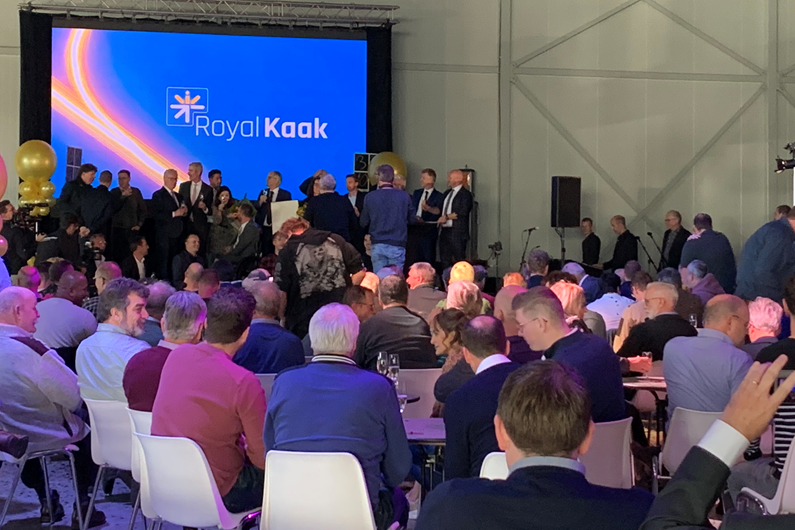
Dutch technology specialist Kaak announced several equipment revisions and upgrades, during an event celebrating the company’s 175th anniversary and the newly-granted Royal title.
Kaak has been working on novelties including a focus on two-phase proofing, a new method developed to increase the process efficiency without skin formation on the surface of the dough, while also being able to have more compact dedicated equipment. This has the following advantages, Kaak explained:
- Giving the baker more control over volume and skin properties.
- Proven dough pieces are more consistent in volume and symmetrical in shape.
- The proofer footprint can be 20% smaller.
- Up to 10% on energy consumption can be saved.
- An innovative air duct design allows for much easier cleaning, in line with the Kaak ‘Hygienic Design’ principles.
Cloud platform iBakeCare has also been revised; it monitors and adjusts the complex requirements of a production line, with options to visualize alarm signals, monitor production behavior, and coach operators. The platform contributes to keeping low maintenance costs. “With iBakeCare you can optimize your production process with data. You can quickly and easily identify failures and adjust where necessary. The visualization and analysis of relevant data are done for you, so you can focus on baking bread,” detailed Kaak. The iBakeCare platform helps gain insights into the processes along the production line. Its tools also help reduce manual administrative tasks and report errors. It timely detects shifts in the production process and can mitigate downtimes, and has options to help train operators to improve equipment maintenance.
Kaak has also updated its Augmented Reality services; it can be used to diagnose and troubleshoot machinery or provide visual instructions for assembly or disassembly. “With augmented reality, we can improve our service efficiency with step-by-step instructions, our customer service with easier self-help guides, our sales with virtual product demos and our factory efficiency with augmented process plans and inspection processes,” the company detailed.




